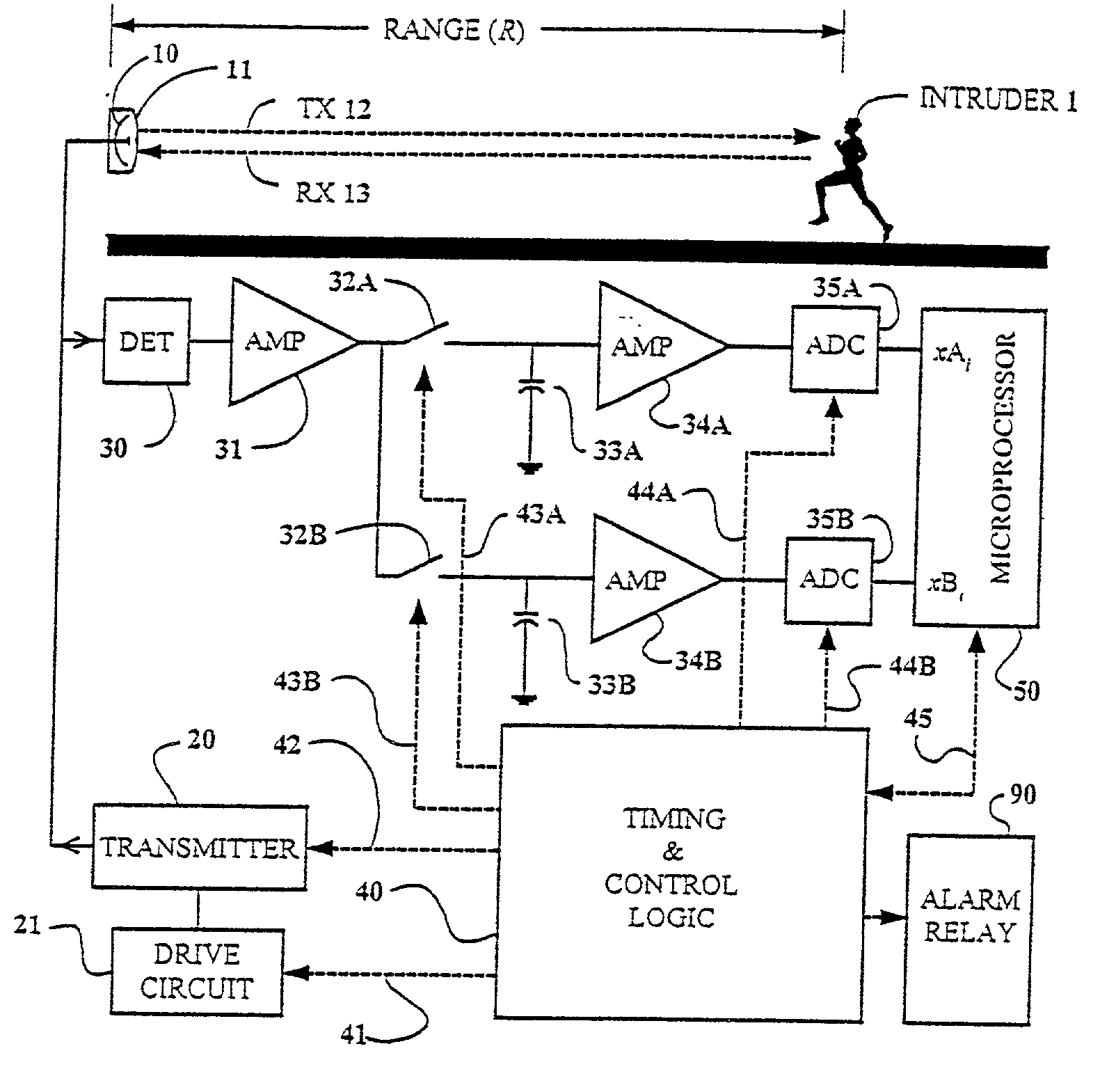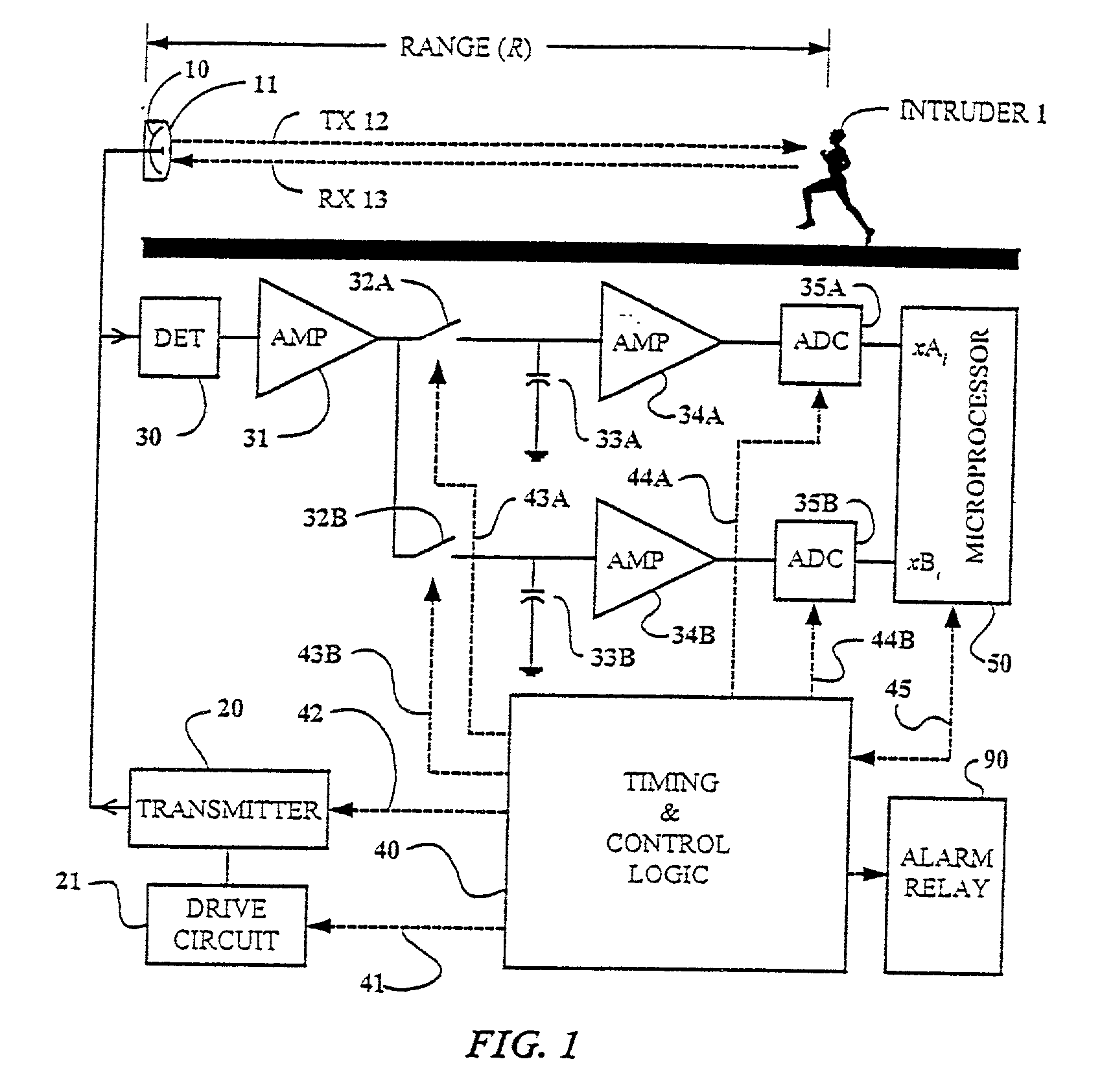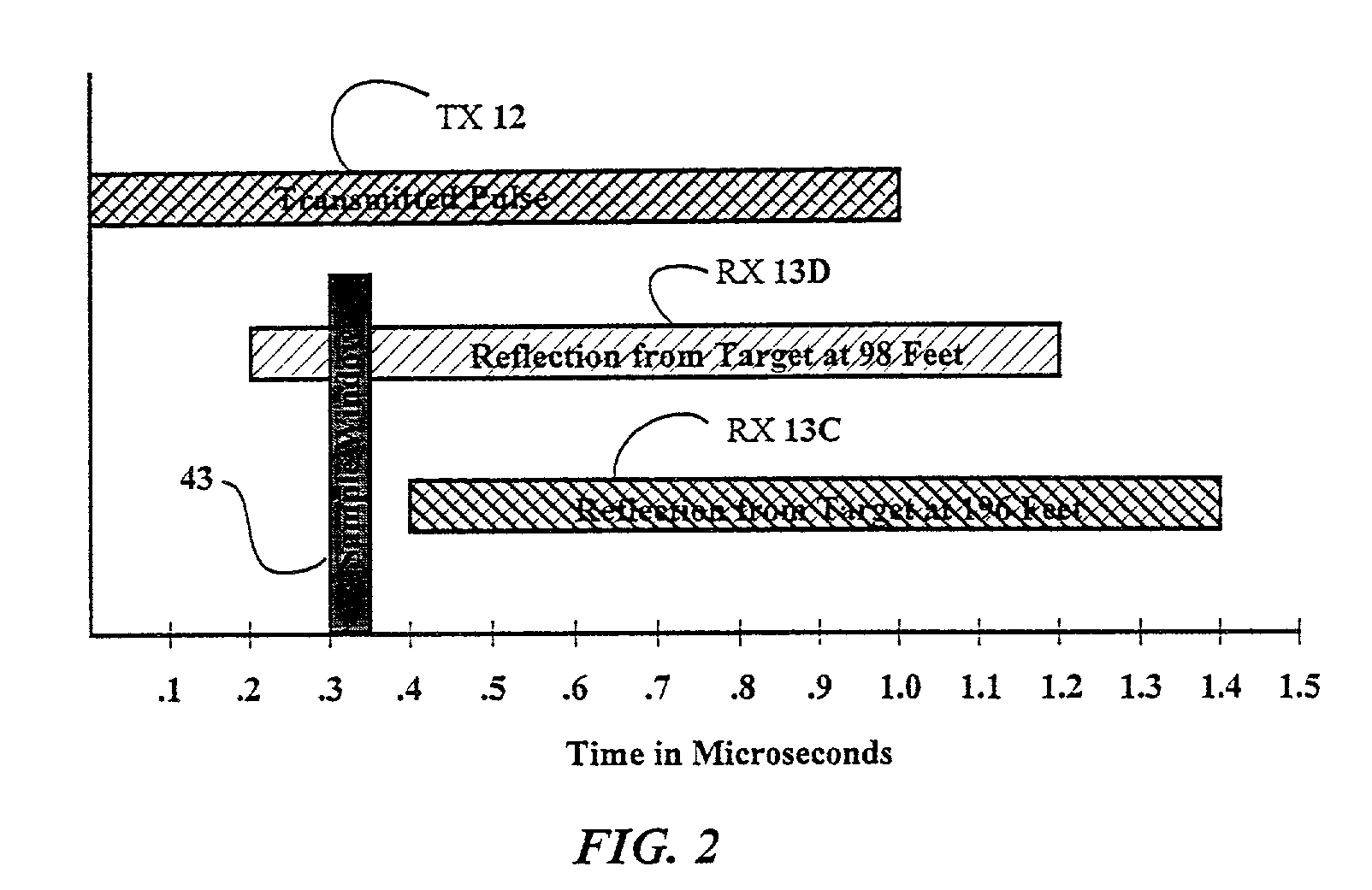Intrusion detection radar system
a radar system and intrusion detection technology, applied in the field of microwave doppler radar detection, to achieve the effect of reducing the nuisance alarm ra
- Summary
- Abstract
- Description
- Claims
- Application Information
AI Technical Summary
Benefits of technology
Problems solved by technology
Method used
Image
Examples
Embodiment Construction
[0026] The basic operation of the Doppler intrusion sensor is illustrated in the upper portion of FIG. 1. A pulse of RF energy 12 is transmitted from antenna 10 and through radome 11. It propagates over the surface of the terrain to illuminate moving intruder 1. A small percentage of this RF pulse 13 is reflected back through radome 11 to antenna 10. It is this reflected signal that is used to detect the presence of the intruder.
[0027] Radome 11 is designed to protect the antenna from the elements while providing minimal RF attenuation. The radome is curved in such a way as to minimize the Doppler response due to rain droplets that form and roll down the surface of the radome. The distance from the antenna to the radome determines the minimum range to a water droplet.
[0028] The antenna field pattern associated with antenna 10 determines the shape of the detection zone. The horizontal beam width of the antenna creates a detection zone that increases approximately linearly with range....
PUM
 Login to View More
Login to View More Abstract
Description
Claims
Application Information
 Login to View More
Login to View More - R&D
- Intellectual Property
- Life Sciences
- Materials
- Tech Scout
- Unparalleled Data Quality
- Higher Quality Content
- 60% Fewer Hallucinations
Browse by: Latest US Patents, China's latest patents, Technical Efficacy Thesaurus, Application Domain, Technology Topic, Popular Technical Reports.
© 2025 PatSnap. All rights reserved.Legal|Privacy policy|Modern Slavery Act Transparency Statement|Sitemap|About US| Contact US: help@patsnap.com



